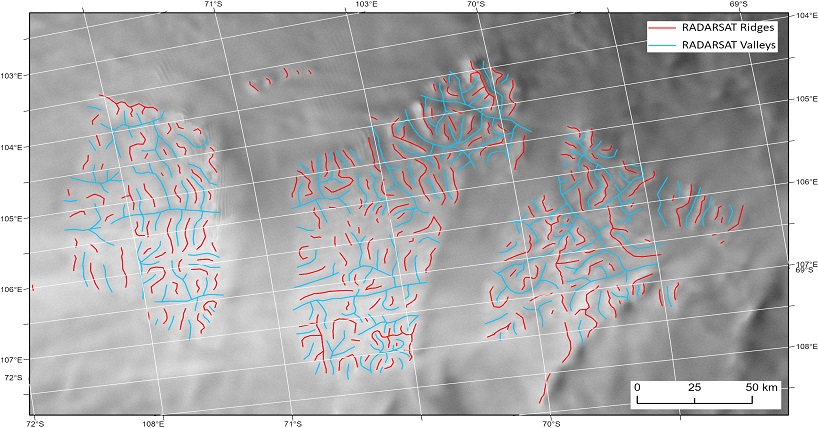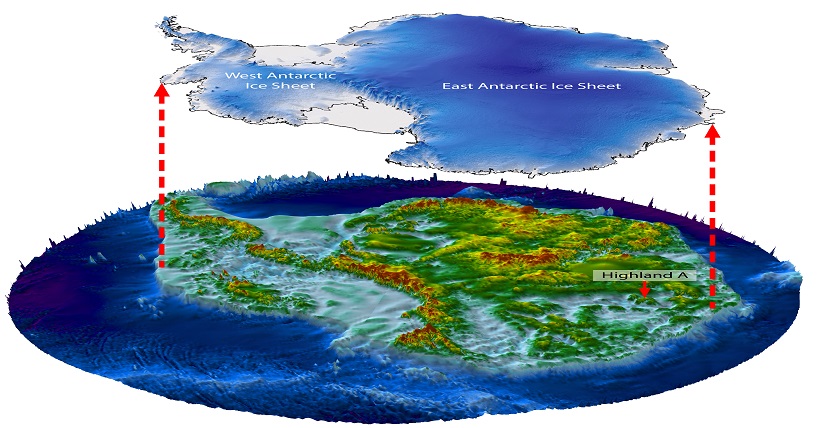Ancient landscape discovered
Ancient landscape discovered beneath East Antarctic Ice Sheet
Published on: 24 October 2023
Scientists at Newcastle University have discovered an ancient landscape that has lain hidden beneath the East Antarctic Ice Sheet for millions of years.
The research team, which also involved scientists at Durham University, used satellite data and radio-echo sounding techniques to map a 32,000 km2 area of land underneath the vast ice sheet.
They discovered a landscape that appears to have been formed by rivers at least 14 million years ago and possibly even before the initial growth of the East Antarctic ice around 34 million years ago.
This newly discovered landscape consists of ancient valleys and ridges, not dissimilar in size-and-scale to the glacially-modified landscape of North Wales, UK.
Its existence implies a long-term temperature stability of the ice sheet in the area investigated by the researchers.
The study has been published in the journal Nature Communications. Co-author Neil Ross, Professor of Polar Science and Environmental Geophysics at Newcastle University, said: “It is remarkable that this landscape, ‘hidden in plain sight’ for many years, can tell us so much about the early, and long-term, history of the East Antarctic Ice Sheet, as well as helping us to understand how it might evolve in response to future climate change. This has been something of a slow burn project, but one that has now come to fruition in an exciting paper involving a great research team.”

Co-author Professor Stewart Jamieson, in the Department of Geography, Durham University, said: “The land underneath the East Antarctic Ice Sheet is less well known than the surface of Mars.
“And that’s a problem because that landscape controls the way that ice in Antarctica flows, and it controls the way it might respond to past, present and future climate change.
“So, we’re investigating a small part of that landscape in more detail to see what it can tell us about the evolution of the landscape and the evolution of the ice sheet. And what we find is an ancient land surface that has not been eroded by the ice sheet and instead it looks like it was created by rivers before the ice came along.
"This tells us that there hasn’t been a lot of change in this particular area, which indicates that although this part of the ice sheet may have retreated during warmer times in the past, the conditions at this site likely did not change much, and that helps us understand how the ice sheet might respond to future and ongoing warming.”
The discovery builds on previous work by this team who, in collaboration with other researchers, have mapped out hidden mountain ranges, canyon systems and lakes beneath the ice in Antarctica.
Although the landscape beneath the ice sheet is not visible to the naked eye, satellite images captured over the region show small undulations of the ice sheet’s surface that provide clues about the sub-ice landscape.
In a few places, the landscape’s existence has been confirmed by using radio-echo sounding from planes to see through the ice and map the shape of the land beneath the ice sheet.

The research team proposes it is likely that there will be other, as yet undiscovered, ancient landscapes hidden beneath the East Antarctic Ice Sheet.
Professor Jamieson added: “We’ll continue exploring the landscape, doing our best to fill in gaps where surveys don’t exist, and using that information to understand how the ice sheet and its underlying landscape have changed over their long history.”
The survey data collection that underpins this work was supported by the UK Research and Innovation’s (UKRI) Natural Environment Research Council (NERC), the National Science Foundation (NSF) and NASA.
Reference: ‘An ancient river landscape preserved beneath the East Antarctic Ice Sheet’ by Stewart S. R. Jamieson, Neil Ross, Guy J. G. Paxman, Fiona J. Clubb, Duncan A. Young, Shuai Yan,Jamin Greenbaum, Donald D. Blankenship, Martin J. Siegert Nature Communications. DOI: 10.1038/s41467-023-42152-2



.jpg)
